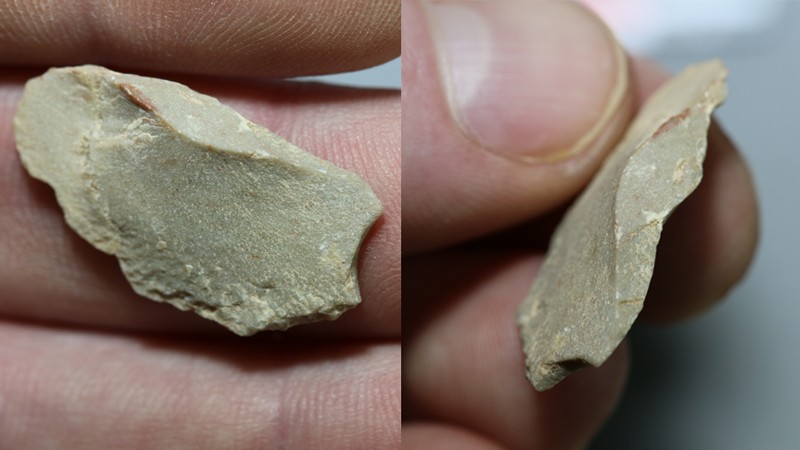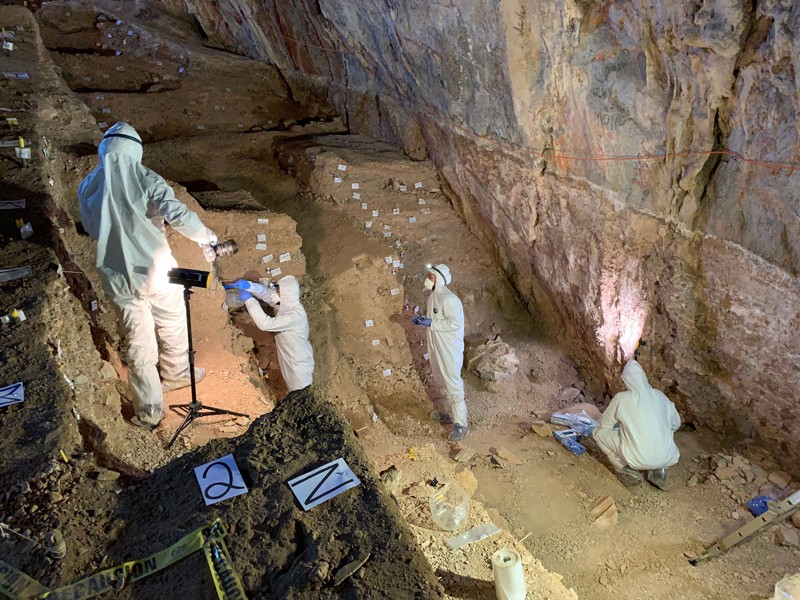Controversial cave discoveries suggest humans reached the Americas much earlier than thought
Stone tools unearthed in a cave in Mexico indicate that humans could have lived in the area as early as about 33,000 years ago, researchers reported. That’s more than 10,000 years before humans are generally thought to have settled North America.

This controversial discovery enters a new piece of evidence into the fierce debate about when and how the Americas were first populated.
“A paper like this one is really stirring up the pot,” says co-author Eske Willerslev, an evolutionary biologist at the University of Cambridge. It “will no doubt get a lot of arguments going.”
For decades, archaeologists thought the Americas’ first residents were the Clovis people — big game hunters known for their well-crafted spearpoints who crossed a land bridge from Asia to Alaska about 13,000 years ago. Recent, well-accepted archaeological discoveries suggest that North America’s first settlers actually arrived a few thousand years before the rise of the Clovis culture, by about 16,000 years ago, says Vance Holliday, an archaeologist at the University of Arizona in Tucson not involved in the new work.
If the new finds really are human tools, Holliday says, this would be the oldest evidence for a human-inhabited site anywhere in the Americas.
At Chiquihuite Cave in central Mexico, archaeologists unearthed what appear to be over 1,900 stone tools.
Using radiocarbon dating to determine the ages of charcoal, bone and other detritus surrounding the artefacts, the researchers determined that more than 200 of the tools were embedded in a layer of the earth as old as 33,150 to 31,400 years. Other artefacts were found in a layer as fresh as about 13,000 years old.
The tools, excavated from 2016 to 2017, do not resemble Clovis technology or any other stone tools found in the Americas, the researchers say.
This haul “has a lot of small blades and small flakes that were used for cutting,” says archaeologist Ciprian Ardelean of the Autonomous University of Zacatecas in Mexico.
His team also dug up squarish stone fragments that he suspects were used to make composite tools of some sort, assembled from pieces of rock stuck into wooden or bone shafts.
“People are going to disagree about whether this qualifies as evidence” of human activity, says Loren Davis, an archaeologist at Oregon State University in Corvallis not involved in the work. “These are rocks that were broken, but … people don’t have a monopoly on the physics involved with breaking rocks,” Davis says that a closer examination of the artefacts in person or via 3-D models could convince him that they are indeed relics of human craftsmanship.
Ben Potter, an archaeologist in Fairbanks, Alaska, affiliated with the Arctic Studies Center at Liaocheng University in China, is similarly “intrigued but unconvinced” that Chiquihuite Cave was an ancient human abode. He notes the crude shape of many of the artefacts, as well as the absence of other evidence — such as butchered animal remains or human DNA — that would peg the site as a human residence.

Neither the tools’ shape nor the apparent lack of other human-made remains disqualifies Chiquihuite Cave as an ancient dwelling, Ardelean says. He argues that archaeologists’ expectations of what North American stone tools should look like are overly influenced by the perfection of Clovis points, which were neatly chipped from brittle stone such as jasper. The limestone used by the Chiquihuite Cave dwellers was more difficult to work with, he says, so it makes sense that these implements would be more rugged.
As for corroborating evidence of human activity, Ardelean expects human DNA to turn up only in specific areas of the cave, like where people ate or relieved themselves. He and his colleagues may not have excavated those spots yet, he says. The swath of ground investigated in this dig was also far from the mouth of the cave, where ancient people would more likely have cooked, eaten, thrown out garbage and performed other daily activities, he says.
Anthropologist Ruth Gruhn of the University of Alberta in Edmonton “wasn’t a bit surprised” at the authors’ claim of 30,000-year-old human handiwork in Mexico.
This cave joins a handful of sites in Brazil that have shown evidence of human occupation more than 20,000 years ago — although those reports remain controversial. To convince many archaeologists that humans really were in the Americas so early, “what you need is an accumulation of sites of that antiquity,” says Gruhn, whose commentary on the new study appears in Nature.
If there were humans in Mexico more than 30,000 years ago, that would affect what route they could have taken south from Alaska, says geologist Alia Lesnek of the University of New Hampshire in Durham. Archaeologists have thought that if humans arrived about 16,000 years ago, they may have plodded south along the Pacific Coast.
That’s because a narrow, inland ice-free corridor between two ice sheets covering Canada would not have had enough plants or animals to sustain human travellers. But more than 30,000 years ago, those ice sheets had not yet reached their full extent, Lesnek says, opening up the possibility of inland migration.





